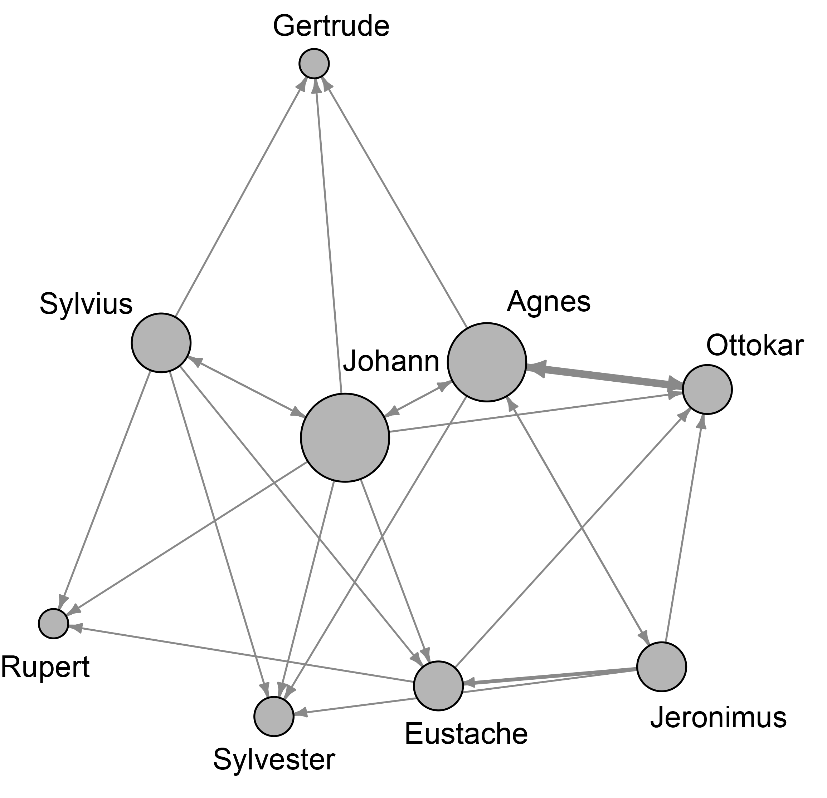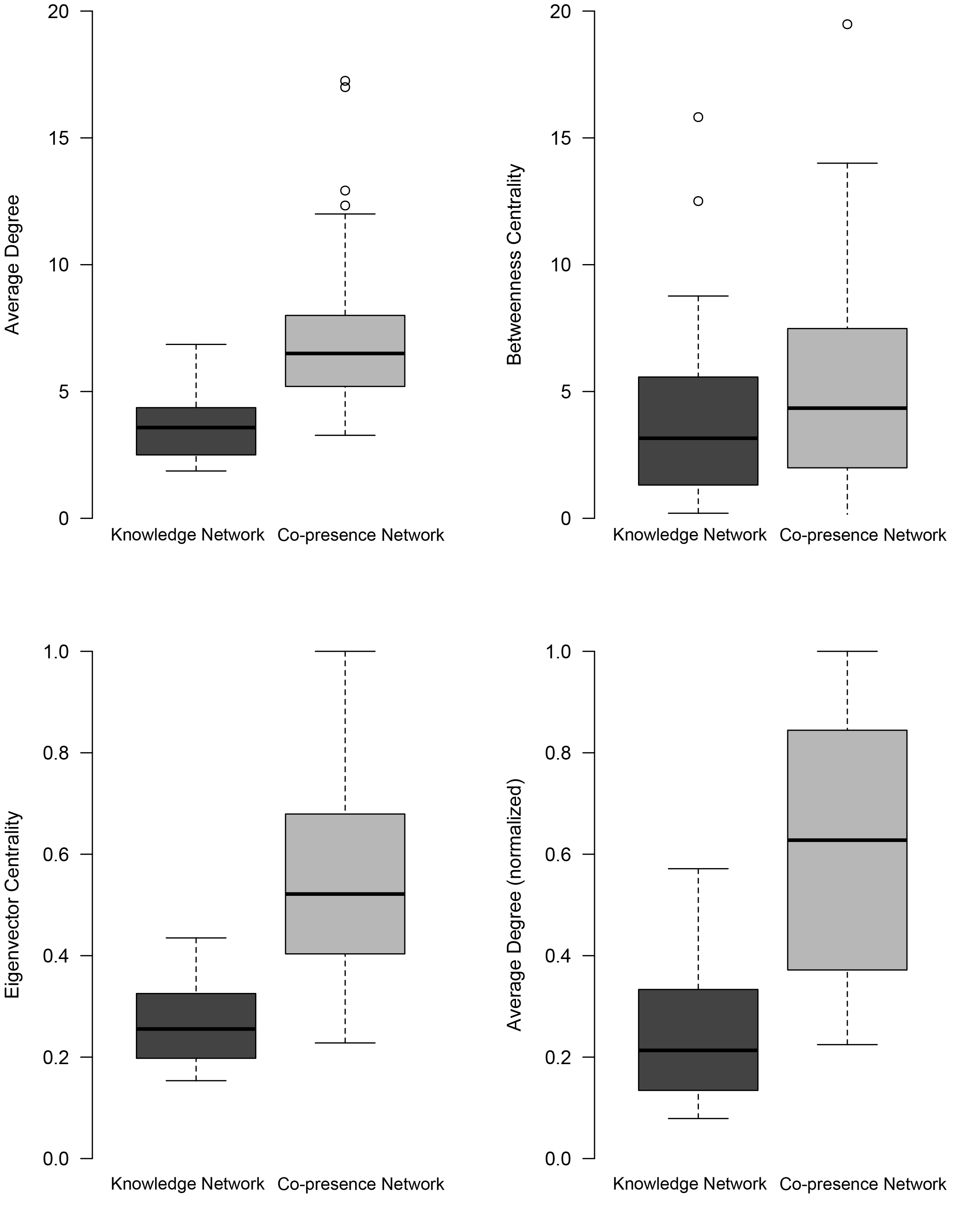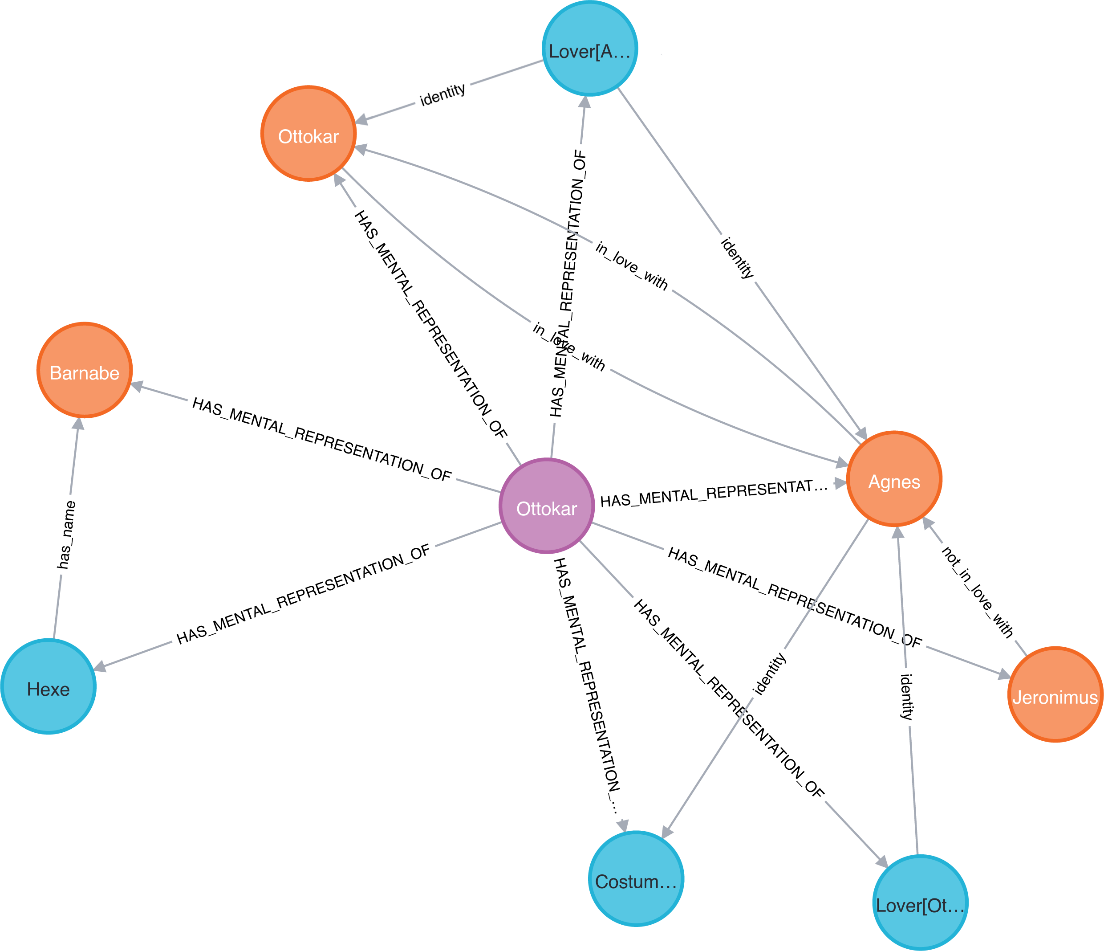4. Comparing mathematical network metrics in knowledge networks
To create knowledge networks, we make use of our annotation data. Characters that are SOURCE or TARGET of a knowledge transmission are represented as nodes. Figure 1 depicts an example of such a network. The network visualizes the knowledge transmissions in Heinrich von Kleist’s tragedy Die Familie Schroffenstein (1803). As we identify both SOURCE and TARGET in our annotation data, it is possible to create a directed and weighted network. Although the relations of the knowledge transfers are not specified, the network of Die Familie Schroffenstein still offers an interesting perspective on the play. None of the main characters is at the center of the network. Instead, it is Rupert’s natural child Johann, who throughout the play has fallen into madness. The weighted edges also showcase the close proximity of the lovers Agnes and Ottokor, whose gradually developing relationship is at the center of the tragic conflict. 5

Figure 1: Knowledge network of Die Familie Schroffenstein.
To gain a macroanalytical perspective, we have calculated three common centrality metrics for all 30 plays in our corpus: degree, betweenness centrality, and eigenvector centrality. 6 Table 2 (Appendix) gives an overview and lists the average and maximum values of these metrics. While the limited number of plays does not (yet) 7 allow to look at possible diachronic trends, there are insights to be gained. In some cases, the maximum degree surpasses the number of characters. There are at least two reasons for this: Firstly, the networks are directed. A character’s maximum degree therefore combines in- and out-degree. Secondly, knowledge transmissions are not limited to characters that are actively performing on stage, as letters or off-stage characters can be the SOURCE of a transfer and the audience or unknown characters can be the TARGET. Another striking observation concerns the maximum (sd = 23.03) and average (sd = 3.55) betweenness centrality, as they both fluctuate pretty heavily.
To follow this second observation up with a more substantial analysis, we computed the same metrics for the corresponding co-presence networks and compared the values. Figure 2 shows boxplots for the average degree, normalized average degree, 8 betweenness and eigenvector centrality values in our corpus of 30 plays. As becomes visible throughout all metrics, the medians of the knowledge networks are considerably lower than those of the co-presence networks. The values, however, are not only lower, but the variance is also less pronounced. This holds also true for the betweenness centrality. From a theoretical point of view, one might wonder, whether the lower values simply correspond to the – in most cases – smaller sizes of the knowledge networks. This needs further investigation. Looking at the correlation of the network metrics with the plays’ number of characters and the normalized degree values might give a first clue. Centrality metrics in co-presence networks typically suffer from a strong correlation with the number of characters (cf. Krautter 2023b; Szemes/Vida 2024, to appear). This seems to be less of an issue for knowledge networks. While degree (Spearman's ρ = 0.43) and especially betweenness centrality (ρ = 0.78) in the co-presence networks have a pretty noticeable correlation with the number of characters, the correlation is less pronounced or not at all detectable in the knowledge networks (degree: ρ = -0.08 betweenness centrality: ρ = 0.36). Furthermore, the normalized degree values show the same pattern as the three other metrics.

Figure 2: Boxplots of average degree, betweenness centrality, eigenvector centrality and normalized average degree for knowledge and co-presence networks.

